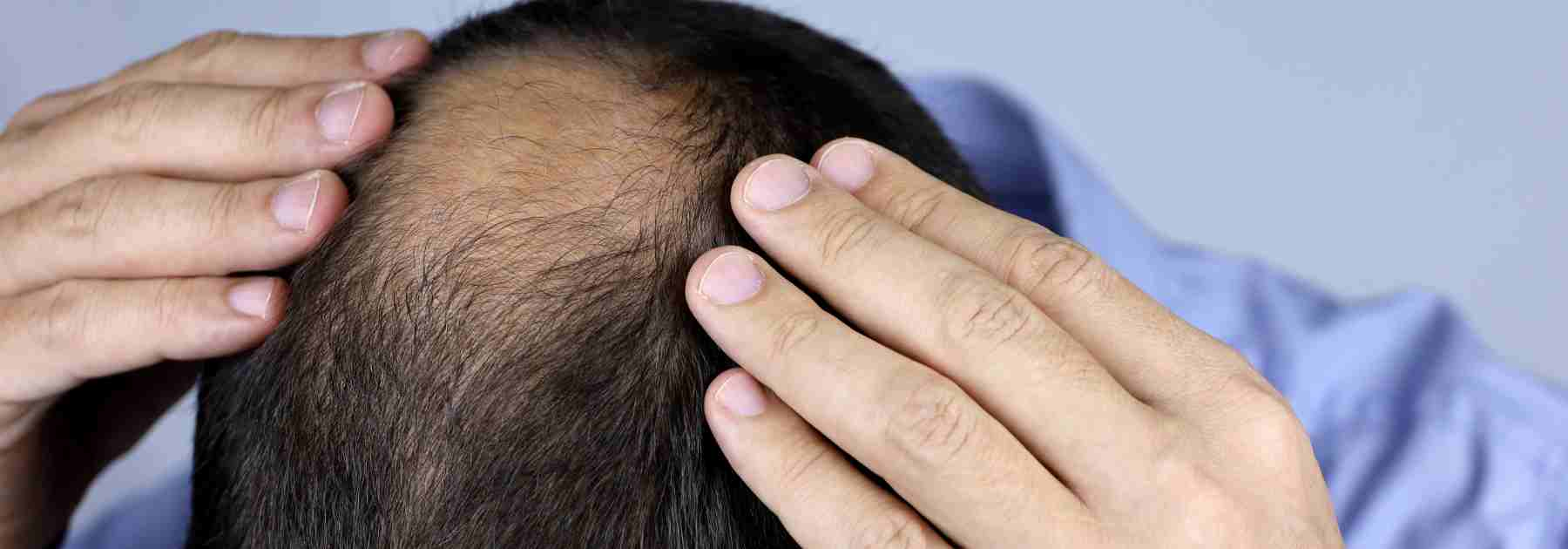Regaine for Men is one of the most popular and widely recognised hair loss treatments in the UK. Available over the counter in both foam and solution form, it’s often the first product men try when they notice early signs of male pattern baldness. And for many, it works well—helping to maintain hair density and, in some cases, encourage regrowth.
But Regaine doesn’t work for everyone. If you’ve been using it consistently and feel like you’re not getting the results you hoped for, it might be time to consider a stronger approach. At Simply Meds Direct, we help men across the country make informed decisions about hair loss treatments, including when and how to transition to prescription options like finasteride or dutasteride.
Here’s how to know if it’s time to move on from Regaine to a prescription solution.
How Regaine for Men Works
Regaine’s active ingredient is minoxidil, a topical treatment that increases blood flow to hair follicles and extends the hair growth phase (anagen). It’s clinically proven to help slow down hair thinning and stimulate regrowth—particularly on the crown of the scalp.
It does not, however, address the root hormonal cause of male pattern hair loss: a substance called dihydrotestosterone (DHT). For this reason, Regaine often works best when hair loss is mild to moderate and hasn’t progressed too far.

When Regaine Might Not Be Enough
You may want to continue using Regaine as long as you’re seeing positive results. But there are several signs it might be time to consider switching to a prescription treatment:
1. You’ve Used Regaine Consistently for 6–12 Months with Minimal Results
Minoxidil usually takes three to six months to show visible improvements. If you’ve used Regaine daily for up to a year with little or no progress, your hair loss may be too advanced—or hormonally driven to a degree that requires additional support.
2. Your Hair Loss Is at the Hairline
Regaine is most effective at treating thinning at the crown of the scalp. If your main concern is receding hairline or temple recession, results with Regaine alone are often limited. Prescription treatments that block DHT are generally more effective in these areas.
3. You’re Experiencing Ongoing Shedding
Some initial shedding is normal with Regaine and a sign the treatment is restarting the growth cycle. But if shedding continues for several months without improvement, this may indicate it’s not working effectively for you.
4. You Want to Treat the Root Cause of Hair Loss
DHT is the key culprit behind male pattern baldness. While Regaine encourages growth, it doesn’t stop hair follicles from continuing to miniaturise. Prescription tablets like finasteride and dutasteride directly reduce DHT, helping to preserve and thicken existing hair.
Prescription Alternatives to Regaine
Finasteride
Finasteride is a once-daily oral tablet that reduces DHT levels by inhibiting the enzyme 5-alpha-reductase. This slows or halts the shrinking of hair follicles and can lead to thicker, healthier hair over time.
Finasteride is proven to stop hair loss in over 85% of men, helps maintain and in some cases regrow hair, and is particularly effective at treating frontal and crown hair loss.
However, it is prescription-only in the UK, can cause side effects like reduced libido or erectile dysfunction (rare), and works only when taken consistently.
Dutasteride
Dutasteride works similarly to finasteride but blocks both Type I and Type II 5-alpha-reductase enzymes. This leads to even greater DHT suppression and may provide better results in men with more aggressive hair loss.
It is a stronger DHT blocker than finasteride, may work for those who didn’t respond to finasteride, and is suitable for more advanced male pattern hair loss.
Currently it is not officially licensed for hair loss in the UK (off-label use only), can pose a higher risk of side effects compared to finasteride, and requires thorough medical supervision and follow-ups.

Can You Combine Regaine and Finasteride?
Absolutely. In fact, many men see the best results by combining Regaine for Men with a DHT-blocking medication. This dual approach tackles both hair regrowth and hormonal causes, offering the best chance at preserving and restoring hair.
At Simply Meds Direct, we offer combination treatment plans and ongoing support to help you use both products safely and effectively.
The Bottom Line: When to Make the Switch
If you’ve given Regaine a fair trial and still feel frustrated by your results, you’re not alone. Many men eventually turn to prescription treatments to get the results they’re after.
The decision to switch should be based on:
-
How long you’ve used Regaine
-
The area and severity of your hair loss
-
Whether you’re looking for prevention, regrowth, or both
-
Your comfort with potential side effects of oral medications
A private consultation with our clinical team can help determine the most effective path forward—whether that’s continuing with Regaine, adding a DHT blocker, or switching entirely to prescription treatment.
Speak to Our Experts at Simply Meds Direct
If you’re ready to explore prescription alternatives to Regaine for Men, we’re here to help. Our online consultation process is quick, confidential, and led by UK-registered healthcare professionals. We’ll assess your situation and recommend the most effective hair loss treatment plan—delivered straight to your door.
Contact us to find out more about our services and how we can support you.
Take control of your hair loss journey today with Simply Meds Direct.
This blog was written on behalf of Simply Meds Direct by Pharmacy Mentor.
